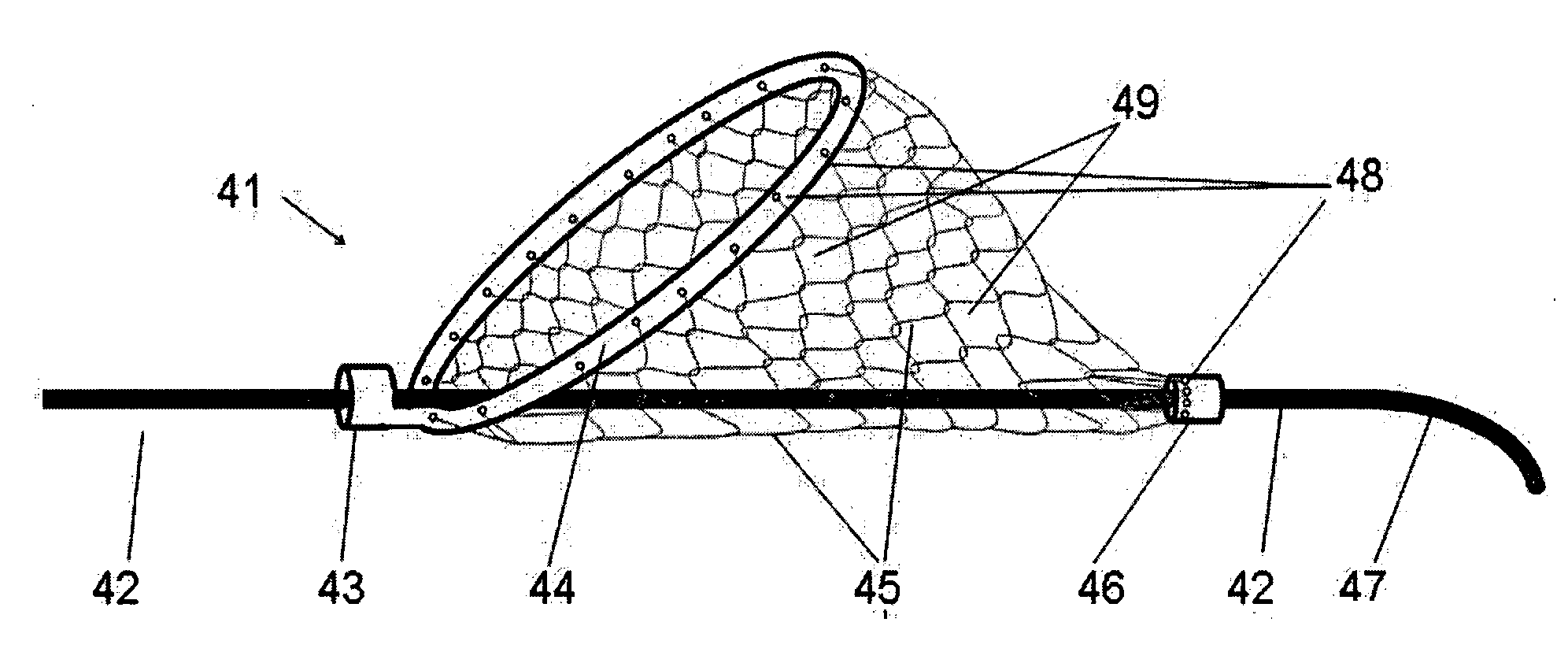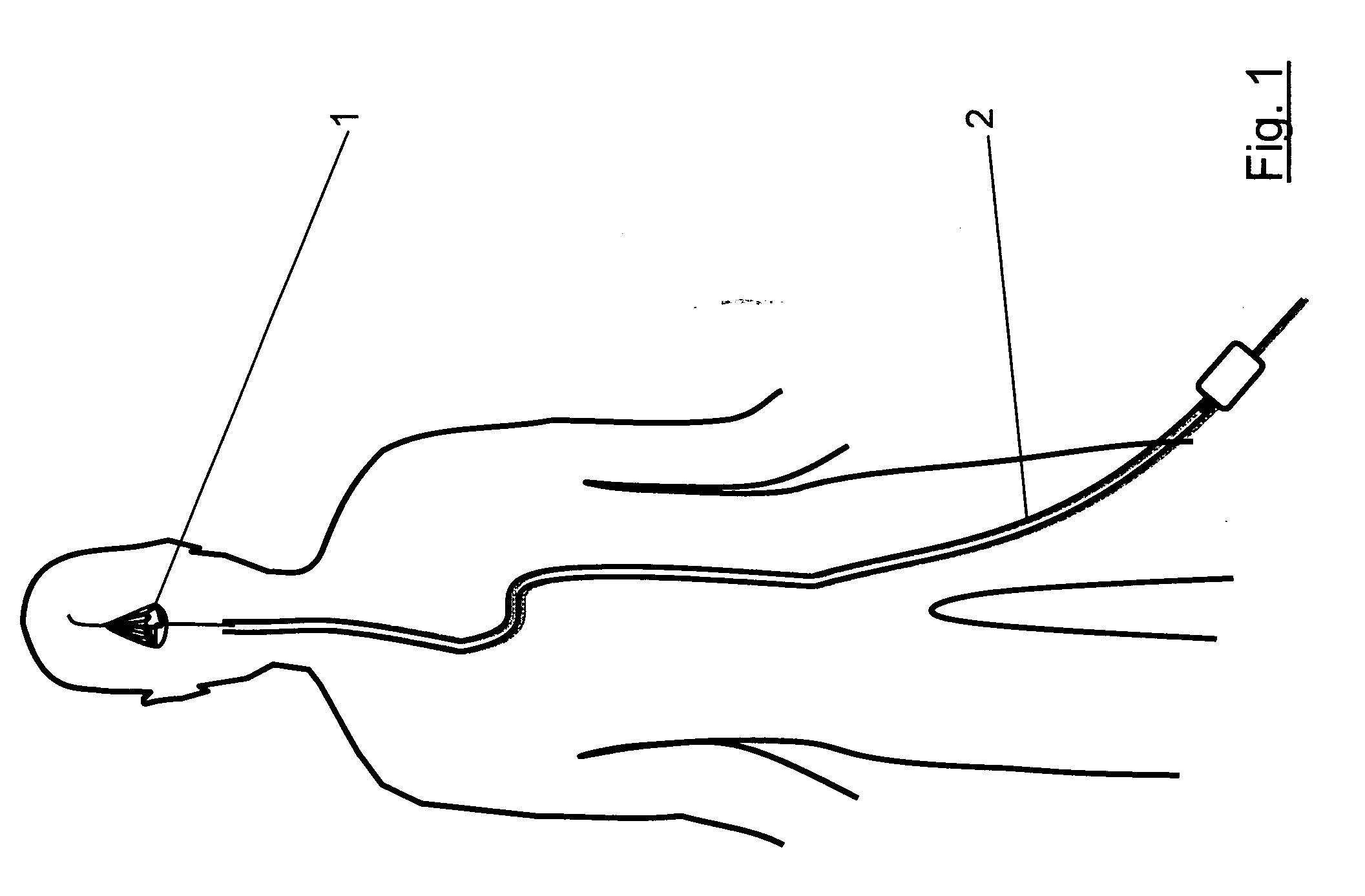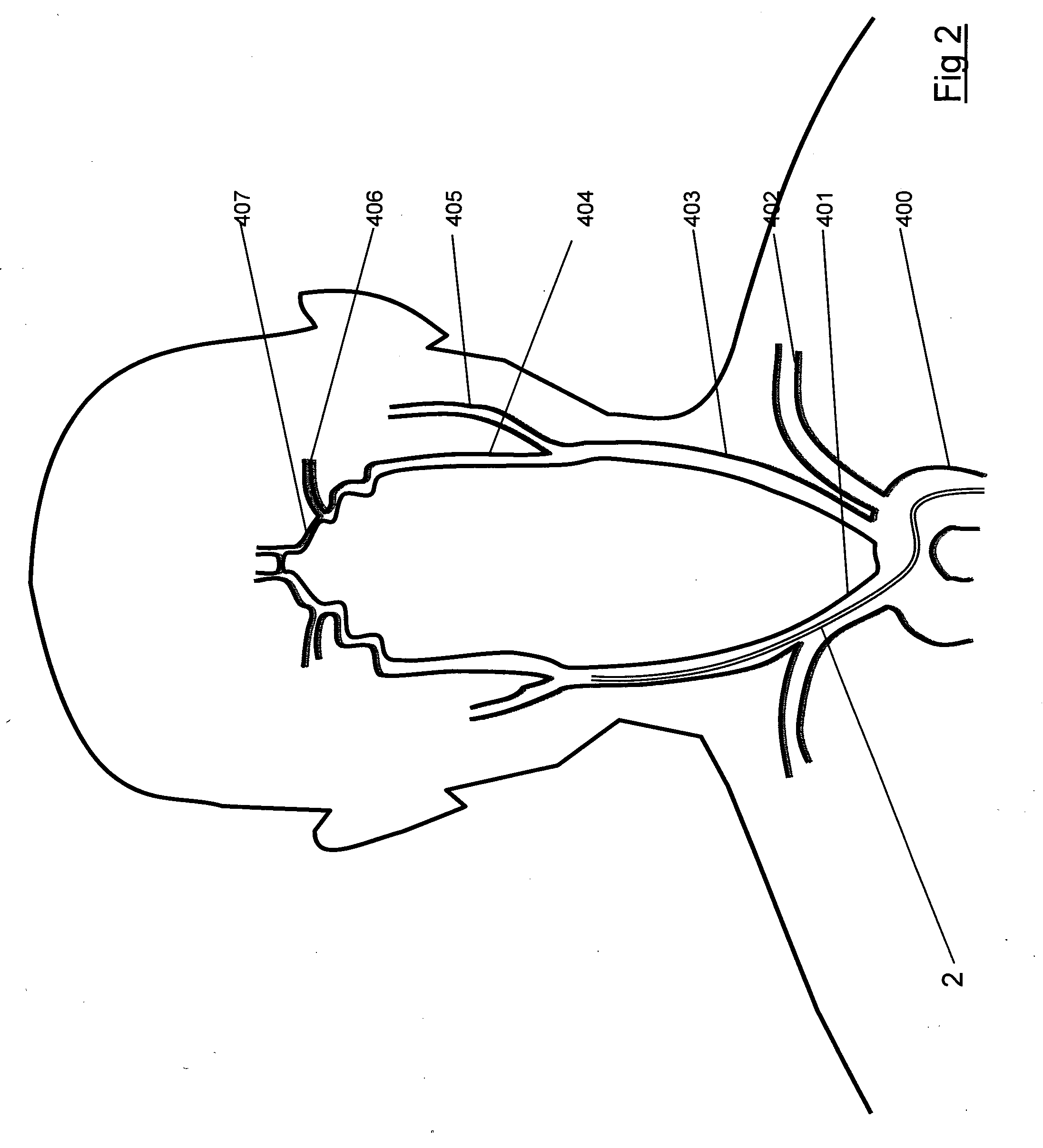Clot capture systems and associated methods
a technology of clot capture and capture system, which is applied in the field of devices and methods of removing acute obstructions from blood vessels, can solve the problems of ineffective clot removal, inability to navigate tortuous vessels, and large profile of conventional technology, etc., and achieve the effect of effective engagement and captur
- Summary
- Abstract
- Description
- Claims
- Application Information
AI Technical Summary
Benefits of technology
Problems solved by technology
Method used
Image
Examples
Embodiment Construction
[0447]The present invention is related to an apparatus and methods for the removal of obstructions in vessels. More particularly the present invention relates to devices and methods for the removal of obstructive clot from cerebral vessels.
[0448]With reference to FIG. 1 there is shown a schematic representation of the catheterization of a patient with a clot retrieval device 1 according to the invention. The patient is catheterized via the femoral artery with a catheter 2 in accordance with standard interventional technique.
[0449]FIG. 2 shows a schematic representation of some of the arteries supplying blood to the brain. The arteries shown are on the anterior circulation. Vessel 400 is the Aorta. Vessel 401 is the brachiocephalic artery. Vessel 402 is the subclavian artery. Vessel 403 is the common carotid artery. Vessel 404 is the internal carotid artery. Vessel 405 is the external carotid artery. Vessel 406 is the middle cerebral artery. Vessel 407 is the anterio-cerebral artery....
PUM
 Login to View More
Login to View More Abstract
Description
Claims
Application Information
 Login to View More
Login to View More - R&D
- Intellectual Property
- Life Sciences
- Materials
- Tech Scout
- Unparalleled Data Quality
- Higher Quality Content
- 60% Fewer Hallucinations
Browse by: Latest US Patents, China's latest patents, Technical Efficacy Thesaurus, Application Domain, Technology Topic, Popular Technical Reports.
© 2025 PatSnap. All rights reserved.Legal|Privacy policy|Modern Slavery Act Transparency Statement|Sitemap|About US| Contact US: help@patsnap.com



